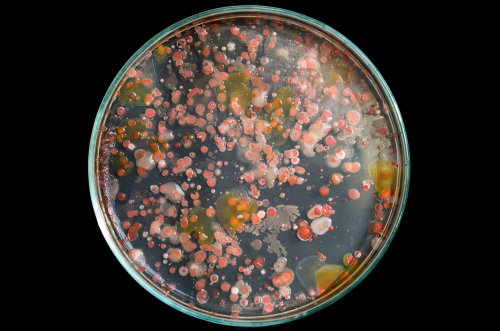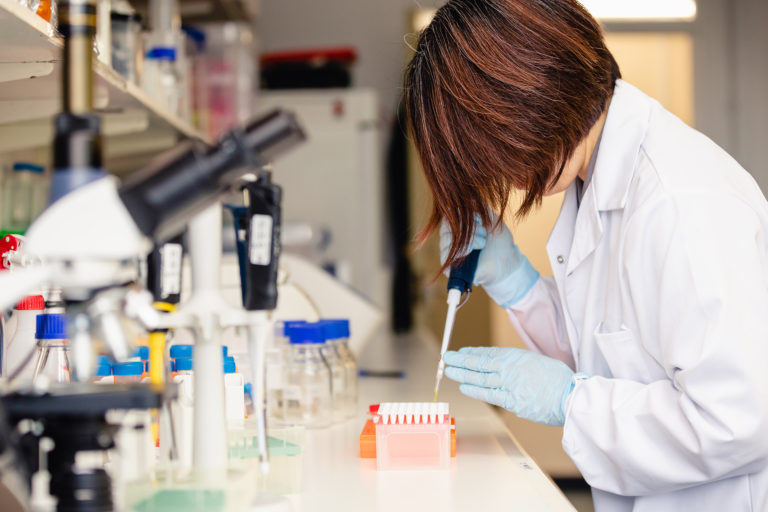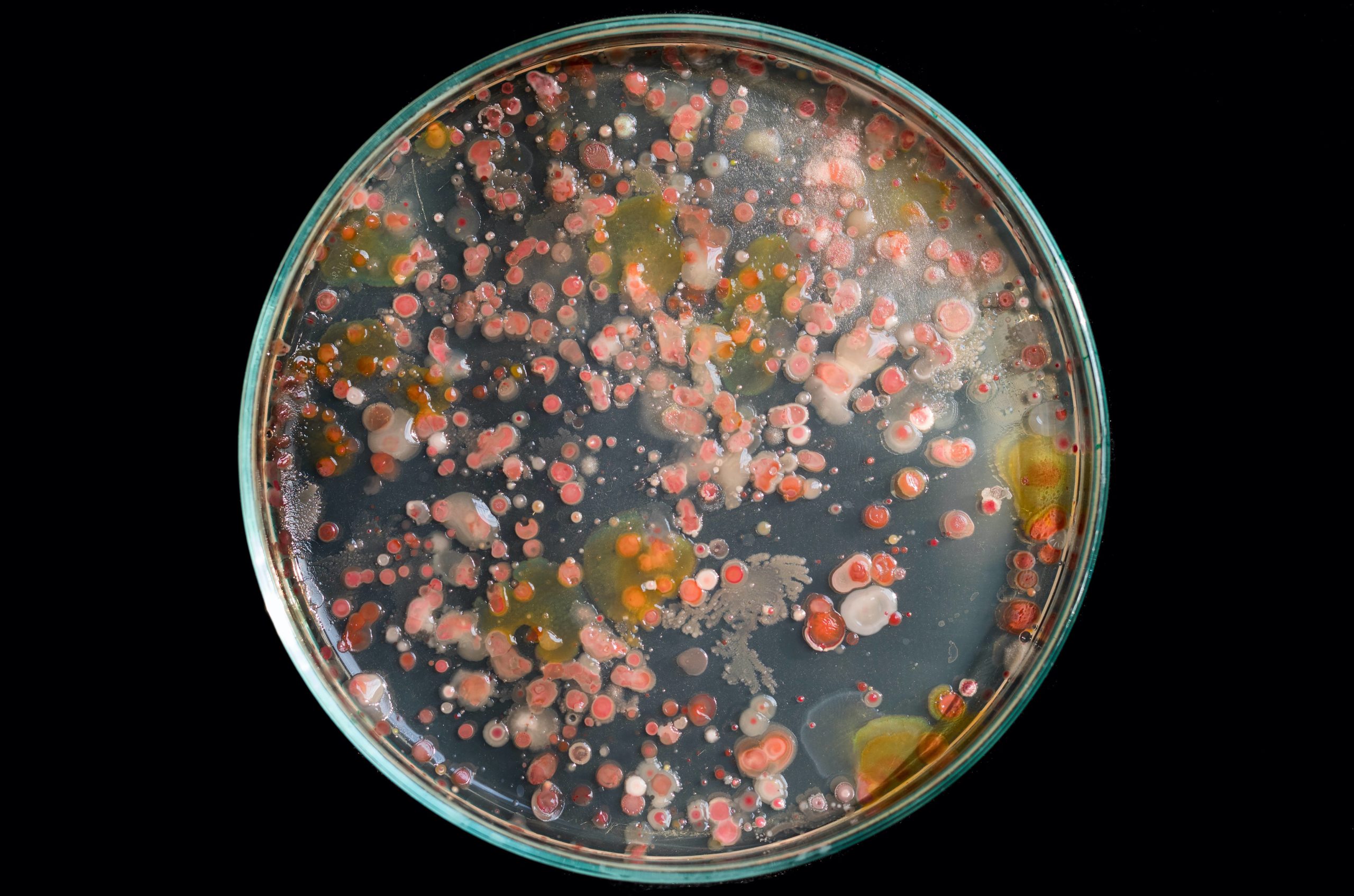
Theoretically, if all farmers could achieve the highest attainable yield — worldwide crop production would rise by 45-70%. The yield losses come from inadequate fertilizer or water, or by losses to pests or disease. A study by Oerke in 2006 reported yield reductions of up to 50-80% without crop protection intervention. However, vast increases in use of fertilizers, water, and pesticides are not only economically impractical, but would have many negative environmental consequences. (Read more)
Scientists have reported that Earth has lost a third of arable land in the past 40 years and it takes around 500 years for just 2.5cm of topsoil. Furthermore, FAO estimates that there are only 60 harvest left before our soils become too degraded to feed us. Therefore, our responsibility now is to find environmentally friendly solutions to be able to farm for future populations!
A strategy to limit the environmental impact of agriculture is to substitute or to balance chemical agricultural inputs with biological inputs. Some of the key drivers for this are:
- Regulatory bodies (in EU) are imposing restrictions on chemical pesticides. In fact, in 25 years, 50% of the chemical inputs that are used today will be banned in the EU (find out more).
- Consumers are demanding less chemicals in their foods, pushing growers towards a biological farming approach.
- Pathogens resistance to chemical is a key factor. As it happens with antibiotic resistance in healthcare, crop pathogens evolve and develop resistance to disease control products. Some studies have even linked the resistance of crop pathogens to chemical fungicides with the resistance of human pathogens to antifungal treatments.
- Agrichemicals also have long term environmental negative effects, such as impact on wildlife (bees, aquatic organisms and soil biodiversity), runoff water pollution, nitrate pollution, etc.
As a result, crop protection companies are now looking at nature to discover natural processes or agents that can overtake chemicals. Natural occurring microorganisms are great candidates for this task, because microbes fight other microbes for ecological niches, and microbes are part of the plants’ physiology (similarly to our gut flora), it is not surprising that crop protection have turned their attention into developing microbial products.

Microbes are organisms that are too small to be viewed by the naked eye. One gram of soil contains billions of virus, millions of bacteria and fungi, in addition to algae, nematodes or protists.
Microbes and plants are intimate partners in virtually every life process. Therefore, there is a clear opportunity in optimizing the microbial communities of plants to enhance productivity. In contrast to past management strategies that targeted microbes in the mistaken belief that they all cause disease.
Some examples of the microbe/plant interactions that agriculture can benefit of include (Read more):
- Acquisition of nutrients: microbes play a key role in making nutrients (i.e. nitrogen, phosphorus, potassium, trace elements) available for plantsAs a matter of fact, Nitrogen can only be absorbed by the plant if it is in ammonia form. Bacteria transform gaseous nitrogen from the atmosphere into ammonia for the plants. Likewise, plants can only uptake phosphorous in an inorganic form Pi. Microorganisms are again responsible for transforming phosphorous compounds within the soil into an absorbable form by the plant. Sulphur, potassium and iron are also nutrients that are transformed by bacteria/fungi before being eligible plant nutrients. Optimisation of soil microbial communities could allow farmers to reduce chemical fertiliser applications.
- Pathogen and predator resistance: microbial/plant partnerships can help plants resist biological threats. In the simplest cases, harmless microbes can occupy ecological niches physically avoiding pathogen colonisation. More sophisticated mechanisms of protection include the natural production of antibiotic or antifungal compounds by microbes in the root zone. Some microbes can even trigger the plant immune defence, or alert neighbouring plants about the presence of harmful pathogens. Furthermore, some microbes feed from microbial pathogens, eliminating threats directly. (Read more).
- Resisting environmental stress: microbes have shown to be key partners mitigating environmental stresses that can affect plants, for example:
- Drought & flood: microbes regulate root growth to mitigate the effects of these environmental stresses on the plant. (Read more)
- Salinity: some fungal endophytes and rhizobacteria can confer salt tolerance to plants, potentially by binding sodium or other ions preventing their uptake by the plant (Read more).
- Heavy metal or organic pollutant contamination: similarly, microbes in the rhizosphere can sequestrate toxic metals or degrade/detoxify contaminated soils and promote plant growth in contaminated soils. (Read more).
- High and low temperatures: species of rhizobacteria have shown to reduce the negative impacts in crops caused by suboptimal temperatures. (Read more)
- Microbes play a critical role in the normal development, physiology and metabolism of plants. Some microbes can mimic/inhibit/amplify the activity of plant hormones. Other microbes enhance root respiration or affect transpirations by mediating the activity of stomata. Interestingly, microbial activity is not only by close physical contact, but also mediated by volatile compounds. (Find out more)
- Flavour: microbes can even affect plant’s flavours. In strawberries for instance, a bacterium induces the plant to generate furanones which are responsible for their flavour (Read more).
FungiAlert’s novel SporSenZ technology facilitates a unique microbial soil analysis that informs about the key and dominant microbial species present in the field.
The SporSenZ is a sampler of the microbial community within the soil. Its chemical composition mimics the roots and attracts the microorganisms that are alive and actively growing in the field. This Soil Health Analysis identifies disease risks from soil/water before symptoms are visible to the eye, therefore, it enables growers to make key agricultural decisions, such as: to decide and evaluate appropriate crop protection strategies; plan rotational decisions; choose the most appropriate seed variety or seed treatment; assess the quality of rented land; choose which fields to harvest etc.
FungiAlert has carried out over 1,300 soil analyses worldwide, focusing on the fungal/ooomycetal species. In these analyses, we have identified different types of species, not only crop pathogens, but also naturally occurring beneficial species which can have a beneficial impact on crops.
FungiAlert’s services have the potential to deliver a personalised medicine for crops. By understanding the microbial communities in the field, we are learning the effect of crop protection strategies on the soil diversity. More importantly, we are identifying microbes that could replace and/or contribute to current crop protection strategies, helping us on the path towards a more sustainable agriculture.
Angela de Manzanos, CTO
August 2020


